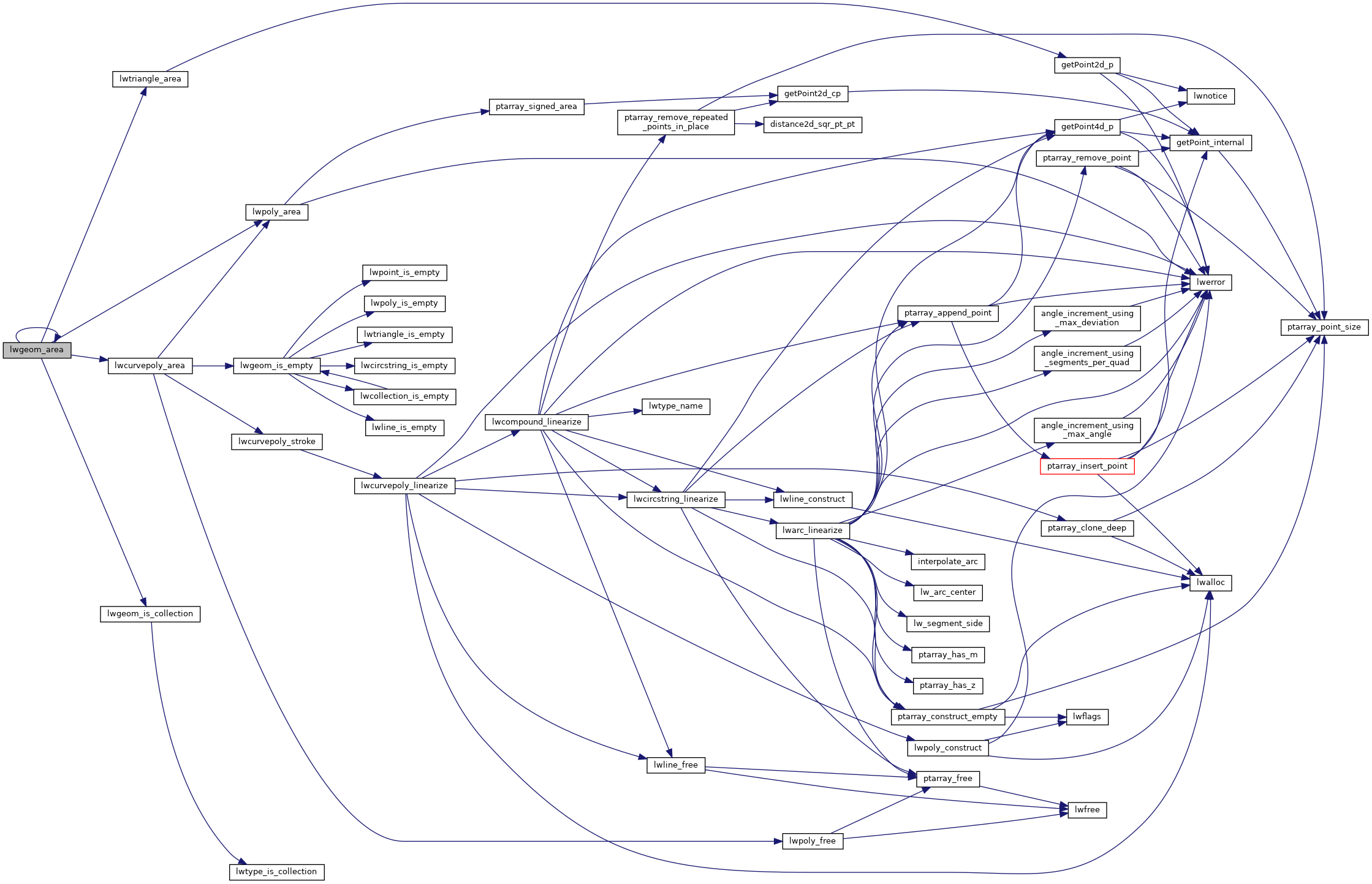◆ lwgeom_area()
| double lwgeom_area | ( | const LWGEOM * | geom | ) |
Definition at line 1863 of file lwgeom.c.
double lwtriangle_area(const LWTRIANGLE *triangle)
Find the area of the outer ring.
Definition: lwtriangle.c:178
double lwpoly_area(const LWPOLY *poly)
Find the area of the outer ring - sum (area of inner rings).
Definition: lwpoly.c:434
double lwcurvepoly_area(const LWCURVEPOLY *curvepoly)
This should be rewritten to make use of the curve itself.
Definition: lwcurvepoly.c:133
int lwgeom_is_collection(const LWGEOM *geom)
Determine whether a LWGEOM can contain sub-geometries or not.
Definition: lwgeom.c:1079
Definition: liblwgeom.h:559
Definition: liblwgeom.h:587
Definition: liblwgeom.h:503
Definition: liblwgeom.h:479
References CURVEPOLYTYPE, LWCOLLECTION::geoms, lwcurvepoly_area(), lwgeom_area(), lwgeom_is_collection(), lwpoly_area(), lwtriangle_area(), LWCOLLECTION::ngeoms, POLYGONTYPE, TRIANGLETYPE, LWGEOM::type, and ovdump::type.
Referenced by lwgeom_area(), lwmpoly_to_points(), ST_Area(), test_gdal_polygonize(), test_lwpoly_construct_circle(), test_misc_area(), and test_raster_surface().
Here is the call graph for this function:

Here is the caller graph for this function:
